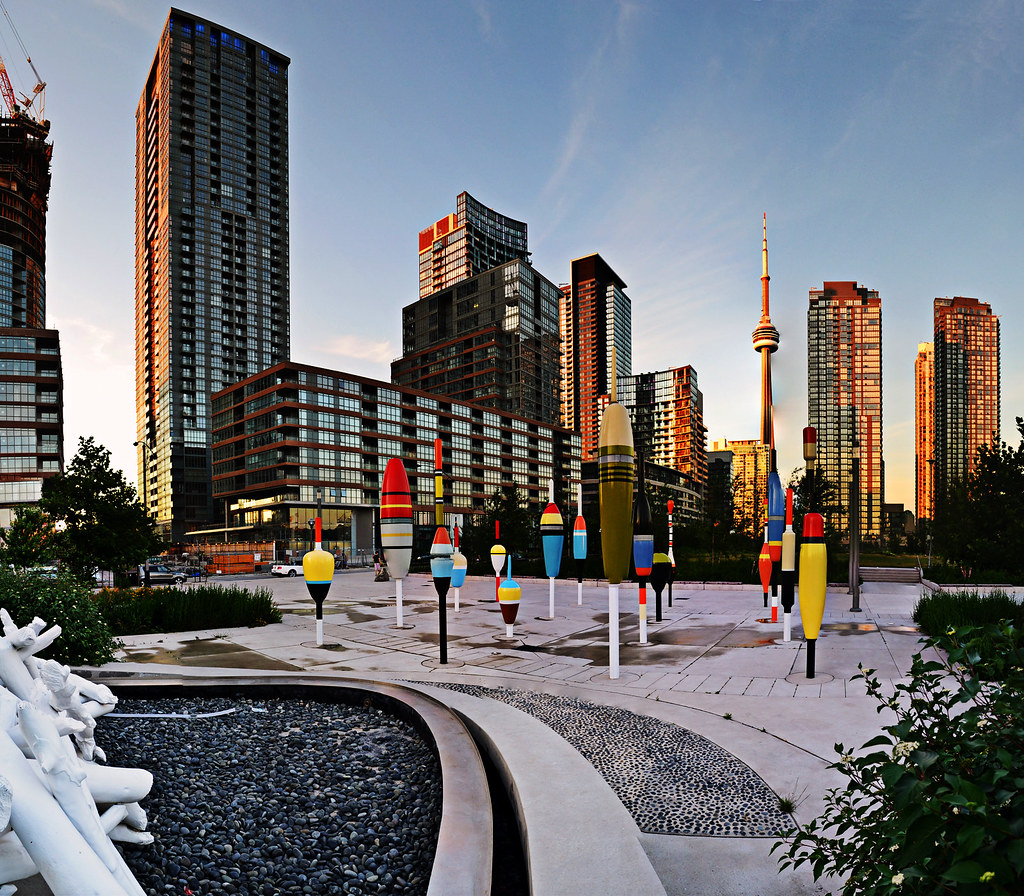Compounded problems can be a portal for interconnected solutions.
In our world, which is becoming increasingly interconnected, monumental challenges such as the care crisis are exacerbated by fragmented problem-solving. The consequences of the care economy go beyond its immediate context, intertwining with external forces. This is particularly true in relation to the impacts of climate change. Toronto, having declared a state of climate emergency in 2019, is facing an imminent surge in meteorological changes over the next few decades, which undoubtedly will affect the provision of social services and programs.
Given the escalating impact of the climate and care crises on Toronto’s vulnerable populations and policy frameworks, piecemeal solutions are no longer sufficient. Instead of developing solutions that independently address these urgent issues, Toronto must adopt a comprehensive approach that integrates the climate-care nexus. This involves creating an environment where the challenges of climate change and the care crisis are not treated in isolation but are instead engaged in a dialogue for mutual benefit. With a holistic strategy, Toronto will be able to effectively navigate the complex intersection of the climate and care crises, safeguarding the well-being of its most vulnerable communities.
Tangled Mess and Linked Solutions
Climate change directly causes changes in temperatures and meteorological events and indirectly creates disturbances in social ecosystems. Faced with increasing heat waves which negatively affect children learning capabilities or even can cause serious health risks, the Toronto District School Board’s (TDSB) and other school boards have been forced to create hot weather plans due to a lack of cooling infrastructure. This is not a one-off consideration. There are many issues that have or will infiltrate our institutions budgets and action plans. As observed in past years, extreme weather events such as smoke from forest fires, flooding or storms can disrupt the provision of services or hinder unpaid caregivers’ ability to travel to care services directed at vulnerable populations like children or long-term care patients. Moreover, global pressures rooted in climate change means that Toronto will likely face an influx in climate migration. Already in 2020, climate-related events impacted 50 million people globally, with sixty percent of them being forced to relocate. Likewise, supply chain problems – which impact the provision of food and medicine – can add an undue burden on caseworkers whose clientele is susceptible to these disruptions.
The impact of the care crisis, akin to the climate emergency, is not distributed evenly among the population. Vulnerable groups, including children, seniors, and immigrants, along with their caregivers, bear the brunt of these changes and climate change can only amplify existing disparities and inequities. Despite this, current interventions addressing climate change tend to prioritize the biophysical environment and technical solutions rather than concentrating on climate-care or social remedies. Yet, as pointed out by OXFAM’s “Caring in a Changing Climate” to build solutions that respond to the care-climate paradigm, policy makers should pay attention to not only physical but also social infrastructures.
Space for Change
Although Toronto has not yet fully integrated its support for caregivers with climate action on a large scale, there are many examples to draw inspiration from. One such example is care blocks, which were first implemented in Bogota, Colombia. This innovative model reorganizes how the city is physically planned to support the social sphere of unpaid caregivers which in turn supports children and/or the elderly. By reducing the invisible burden of caregiving, this strategy indirectly promotes environmental action by reducing travel time and greenhouse gas emissions, while also encouraging caregivers to access available services. There is another layer to this success story: by supporting the structural and socio-cultural aspects of social capital through formal actors such as caregivers, Bogota is fostering a stronger community, which is essential for resilience efforts in times of crisis.
To replicate this success, Toronto should integrate support for caregivers and climate efforts within their own programs and services. The Canoe Landing Campus serves as a good first step. It is a social hub that combines a community recreation center, public and Catholic elementary schools, and a childcare center, all under a massive shared green roof. This Centre represents an investment that builds on the strength of both social and environmental outputs. Not only was it designed with a green lens (e.g., 10% of the building’s energy needs are generated through solar panels) but its environment is multifunctional for different social groups. For example, there are dedicated hours for caregivers in the indoor community playground as well as in the gymnasium facility.

Community care hubs are not the only opportunity for intersecting care and climate policy. Toronto’s current Corporate Strategic Plan states that services and programs should focus being (1) caring and friendly, (2) invested in quality of life, (3) dynamic, and (4) clean, green, and sustainable.
Furthermore, Mayor Chow has outlined an interest in developing stronger public-private partnerships to provide more green space in neighbourhoods across the city. It will be important that these spaces take into consideration the ways in which such spaces can enhance caregiving. By leveraging our rich natural environment such as ravines and parks, we can create more opportunities for equitable care services. Initiatives that bridge both spheres involve community engagement, green infrastructure initiatives, and aid in building education and awareness movements. In investing in social infrastructures within the natural space, Toronto is also reinforcing positive climate adaptation and mitigation outcomes. She also highlighted the need to leverage libraries as c libraries as These too can have services and programming for caregivers that are close to their communities and climate friendly.
In bringing caregivers and care receivers into the fold, the City of Toronto can build – both metaphorically and literally – the means to close the adaptation gap through social empowerment. Caregiving is basic to a functioning society; climate resilience requires that strategies designed for disaster risk reduction and climate change adaptation recognize the vital important of care services and community-building. An approach that simultaneously addresses the care and the climate crisis will foster a sustainable, equitable, and compassion-driven Toronto.



